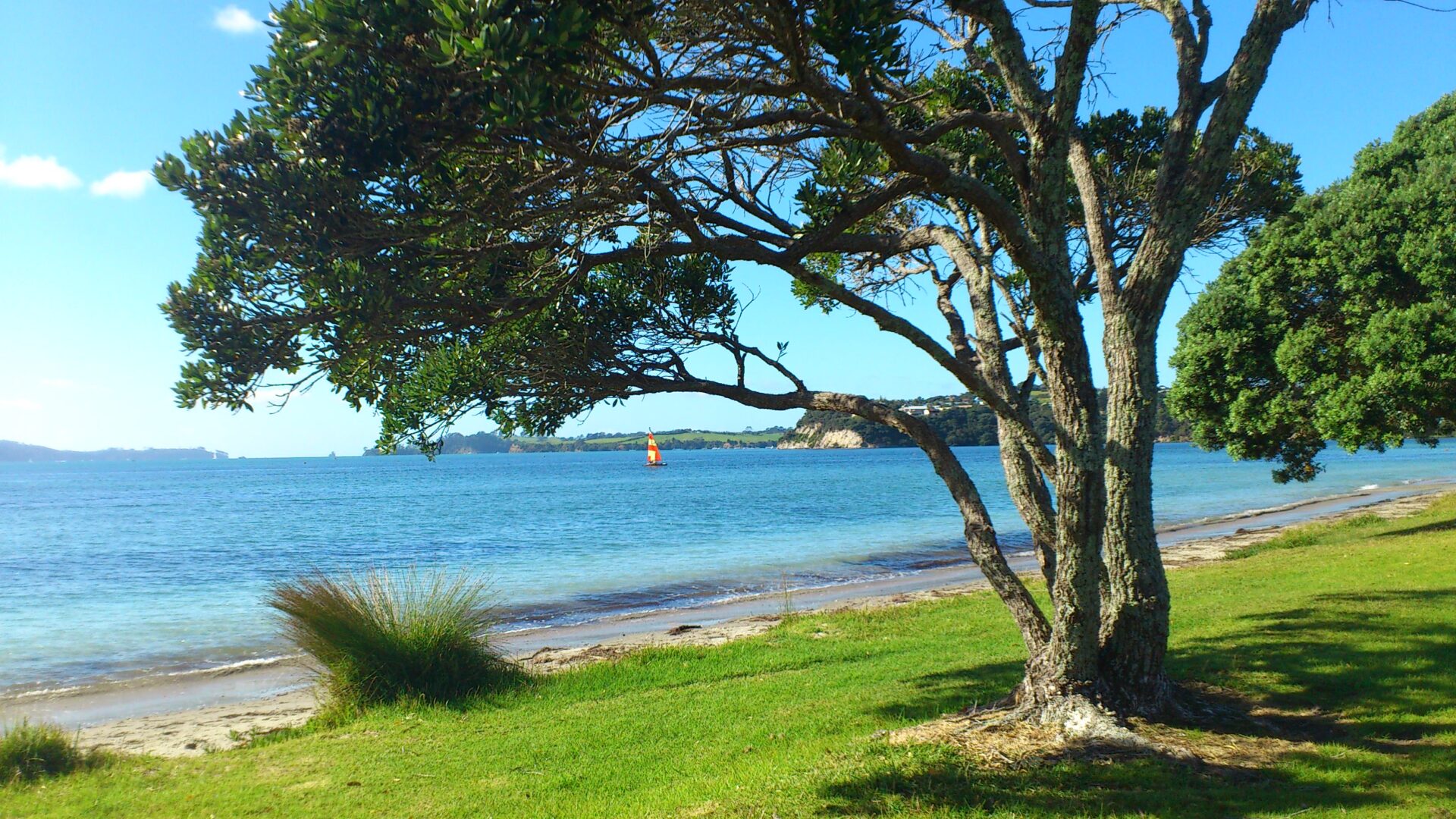Snells Beach is a small coastal town in the north of Auckland Region in the North Island of New Zealand. It is situated on the eastern coast of the Mahurangi Peninsula and its namesake beach faces east across Kawau Bay to Kawau Island.
The area was originally known as Long Beach to early European settlers. It was bought in 1854 by Cornish miner James Snell, who had initially settled at Kawau Island after first working at mines in South Australia. Snell settled at the beach, where his family farmed for generations. Scottish immigrant Alexander Algie and wife Mina, bought the land to the south at Martins Bay, where his brother Samuel settled in 1867. The Algie family established a boarding house on the beach in the late 1890s, which operated until 1941.
In 1904, J. Clayden and J. Parkinson discovered a large amount of kauri gum at Snells Beach, extracting seven tons during low tide. Further digs took place in 1907, predominantly by recent Dalmatian immigrants to the area. By the early 20th century, Snells Beach was becoming a popular spot for holidaymakers, and in the 1930s, the area became better connected to the Auckland roading network, opening the door for more permanent residents.
The first block of shops in Snells Beach was constructed in 1982. The commercial and light industrial area of Snells Beach led to the community becoming the service centre for the wider Mahurangi Peninsula, and the second largest commercial centre in the Warkworth/Matakana areas. During the 2010s, the area transitioned away from being primarily a holiday town to a permanently settled satellite town of Warkworth.
